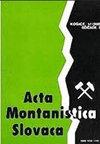循环经济在各个部门的使用率
IF 1.4
4区 地球科学
Q2 GEOSCIENCES, MULTIDISCIPLINARY
引用次数: 0
摘要
尽管循环经济作为一个术语的概念在2015年首次被提及,当时欧洲层面通过了“循环经济行动计划”,但仍不可能在这一领域拥有足够的知识基础。《行动计划》(COM(2015)614)可以被视为一份初步的战略文件,为实施《2030年可持续发展议程》制定了具体而雄心勃勃的路线图。然而,在这种情况下,《欧洲绿色协议》也不能被排除在外(COM(2019)640)。这被视为一项新的增长战略,旨在将欧盟转变为一个公平繁荣的社会,拥有现代、有竞争力、资源高效的经济,到2050年温室气体净排放量预计为零,经济增长独立于资源使用。2020年还通过了一项新的欧盟循环经济行动计划——建设一个更清洁、更有竞争力的欧洲(COM(2020)98)。主要优先领域是侧重于关键产品价值链的措施——电子和信息通信技术、电池和车辆、塑料、纺织品、包装、建筑和建筑、食品、水和营养素措施,涵盖从生产到消费、维修和翻新的价值链的所有环节,废物管理一直到将原材料回归经济,并以二次原材料的形式在生产周期中使用。向循环经济的过渡还包括修订欧洲废物指令:关于废物、包装和包装废物、关于垃圾填埋场、关于电池和蓄电池以及废旧电池和蓄电池,以及关于废弃电气和电子设备。为了实现这一切,有必要了解各个部门产生的废物量,我们的文章也对此进行了讨论。本文章由计算机程序翻译,如有差异,请以英文原文为准。
The rate of use of the Circular Economy in individual sectors
Although the concept of the circular economy as a term was first mentioned in 2015, when the "Action Plan for the circular economy" was adopted at the European level, it is still not possible to speak of a sufficient knowledge base in this area. The Action Plan (COM (2015) 614) can be seen as an initial strategic document that sets out a concrete and ambitious roadmap for implementing the Sustainable Development Agenda 2030. However, the European Green Agreement cannot be left out in this context either (COM(2019) 640). It is seen as a new growth strategy to transform the EU into a fair and prosperous society with a modern, competitive, resource-efficient economy, with net greenhouse gas emissions expected to be zero by 2050 and economic growth independent of resource use. A new EU circular economy action plan - Towards a cleaner and more competitive Europe was also adopted in 2020 (COM(2020) 98). The main priority areas are measures focusing on the value chains of key products electronics and ICT (information and communication technologies), batteries and vehicles, plastics, textiles, packaging, construction and buildings, food, water and nutrients measures covering all links in the value chain from production to consumption, repair and refurbishment, waste management up to the return of raw materials back to the economy and their use in the production cycle in the form of secondary raw materials. The transition to a circular economy also includes a revision of the European waste directives: on waste, on packaging and packaging waste, on landfills, on batteries and accumulators and used batteries and accumulators, and on waste electrical and electronic equipment. In order for all of this to be possible, it is necessary to know the amount of waste produced by individual sectors, which is also dealt with in our article.
求助全文
通过发布文献求助,成功后即可免费获取论文全文。
去求助
来源期刊

Acta Montanistica Slovaca
地学-地球科学综合
CiteScore
3.60
自引率
12.50%
发文量
60
审稿时长
30 weeks
期刊介绍:
Acta Montanistica Slovaca publishes high quality articles on basic and applied research in the following fields:
geology and geological survey;
mining;
Earth resources;
underground engineering and geotechnics;
mining mechanization, mining transport, deep hole drilling;
ecotechnology and mineralurgy;
process control, automation and applied informatics in raw materials extraction, utilization and processing;
other similar fields.
Acta Montanistica Slovaca is the only scientific journal of this kind in Central, Eastern and South Eastern Europe.
The submitted manuscripts should contribute significantly to the international literature, even if the focus can be regional. Manuscripts should cite the extant and relevant international literature, should clearly state what the wider contribution is (e.g. a novel discovery, application of a new technique or methodology, application of an existing methodology to a new problem), and should discuss the importance of the work in the international context.
 求助内容:
求助内容: 应助结果提醒方式:
应助结果提醒方式:


